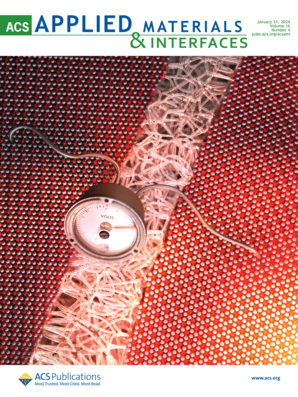Boosting High-Temperature Durability of Industrial-Scale LiMn0.6Fe0.4PO4 Cathode through Niobium Doping
IF 8.2
2区 材料科学
Q1 MATERIALS SCIENCE, MULTIDISCIPLINARY
引用次数: 0
Abstract
Renewable energy’s growth of renewable energy drives the need for advanced lithium-ion batteries (LIBs). LiMn0.6Fe0.4PO4 (LMFP) cathode materials show promise but face challenges like the Jahn–Teller effect and metal dissolution, undermining structural stability and cycling performance, especially under elevated temperatures. This study pioneers the strategic doping of high-valence niobium (Nb5+) into LMFP to address these limitations. The Nb-doped LMFP cathodes were synthesized at an industrial scale using industrially viable coprecipitation and spray-drying methods. Nb is doped into the Li site with controllable atomic content from 0 to 3%. The introduction of Nb reduces antisite defects, accelerates lithium-ion diffusion, and effectively suppresses both the Jahn–Teller effect and manganese dissolution. Notably, the optimized Li1–xMn0.6Fe0.4Nbx@C cathode with 2% Nb exhibits remarkable high-temperature performance, retaining 95.07% of its capacity over 150 cycles at 60 °C and delivering a discharge capacity of 148.4 mAh g–1. These results underscore the transformative potential of Nb doping in overcoming thermal degradation, offering a compelling pathway for the development of robust, long-life LIB cathodes.

铌掺杂提高工业规模LiMn0.6Fe0.4PO4阴极高温耐久性
可再生能源的增长推动了对先进锂离子电池(lib)的需求。LiMn0.6Fe0.4PO4 (LMFP)正极材料表现出良好的前景,但面临着诸如扬-泰勒效应和金属溶解等挑战,破坏了结构稳定性和循环性能,特别是在高温下。本研究开创性地将高价铌(Nb5+)掺杂到LMFP中,以解决这些限制。采用工业上可行的共沉淀法和喷雾干燥法,在工业规模上合成了掺杂nb的LMFP阴极。铌掺杂在Li位点,原子含量在0 ~ 3%可控。Nb的引入减少了对位缺陷,加速了锂离子的扩散,有效地抑制了Jahn-Teller效应和锰的溶解。值得注意的是,优化后的含2% Nb的Li1 - xMn0.6Fe0.4Nbx@C阴极在60°C下,在150次循环中保持了95.07%的容量,放电容量为148.4 mAh g-1。这些结果强调了铌掺杂在克服热降解方面的变革潜力,为开发坚固耐用的长寿命LIB阴极提供了令人信服的途径。
本文章由计算机程序翻译,如有差异,请以英文原文为准。
求助全文
约1分钟内获得全文
求助全文
来源期刊

ACS Applied Materials & Interfaces
工程技术-材料科学:综合
CiteScore
16.00
自引率
6.30%
发文量
4978
审稿时长
1.8 months
期刊介绍:
ACS Applied Materials & Interfaces is a leading interdisciplinary journal that brings together chemists, engineers, physicists, and biologists to explore the development and utilization of newly-discovered materials and interfacial processes for specific applications. Our journal has experienced remarkable growth since its establishment in 2009, both in terms of the number of articles published and the impact of the research showcased. We are proud to foster a truly global community, with the majority of published articles originating from outside the United States, reflecting the rapid growth of applied research worldwide.
 求助内容:
求助内容: 应助结果提醒方式:
应助结果提醒方式:


